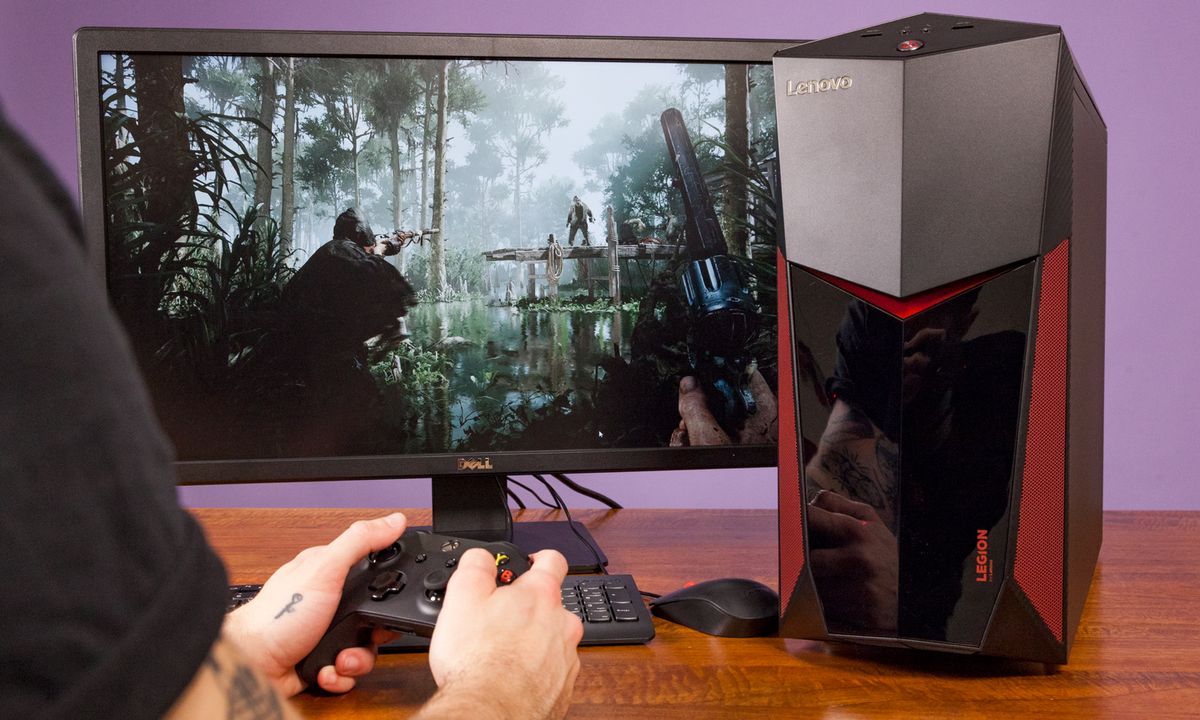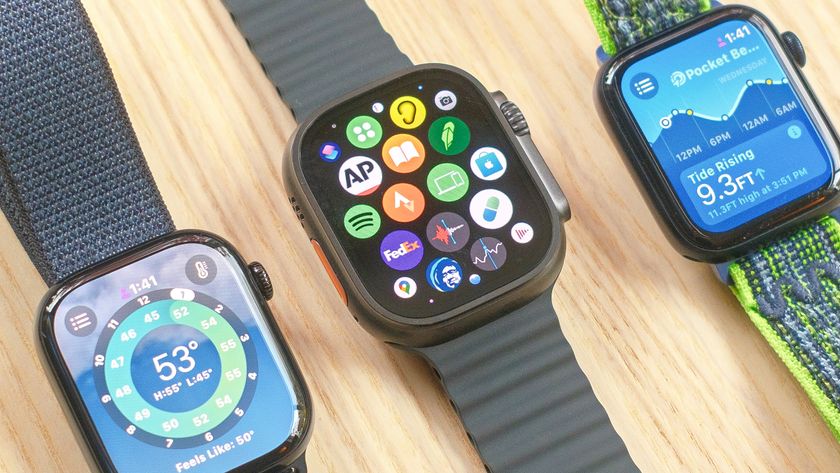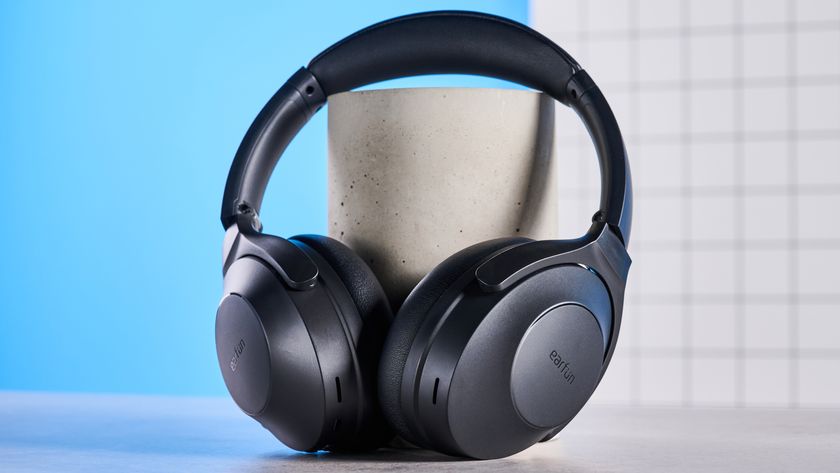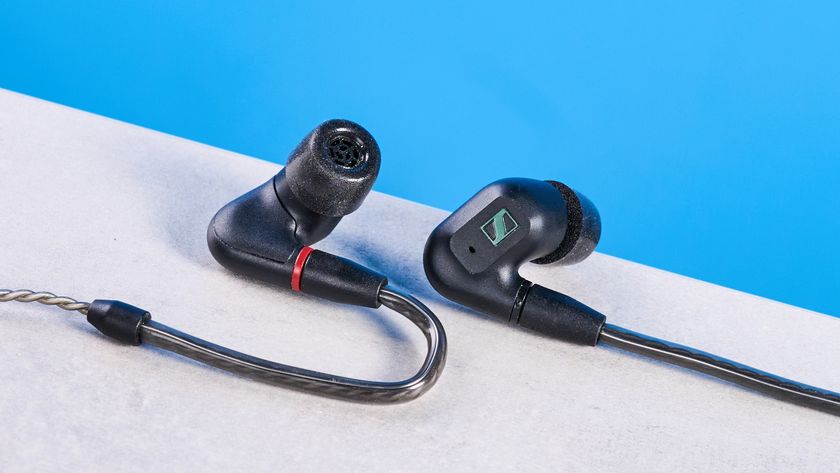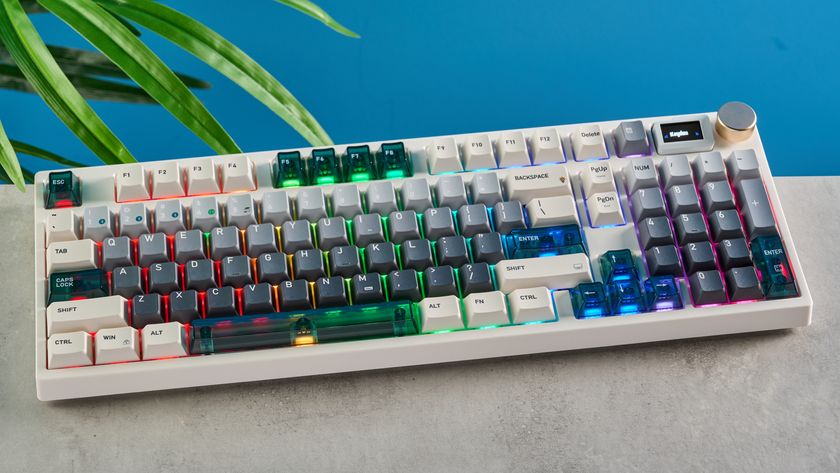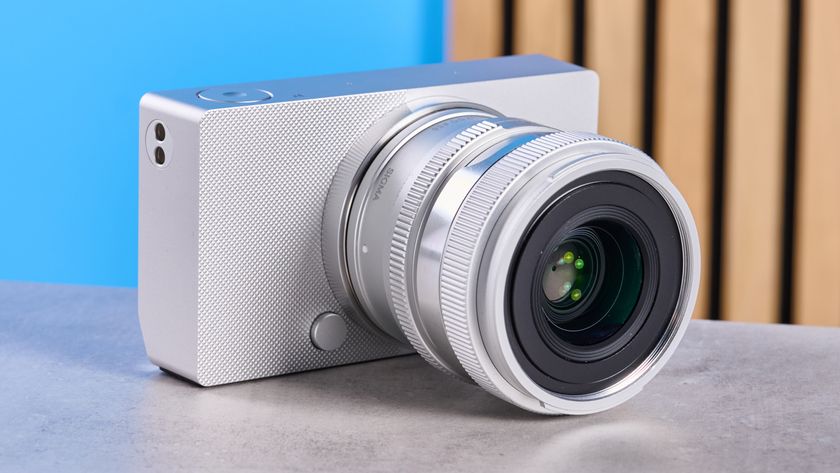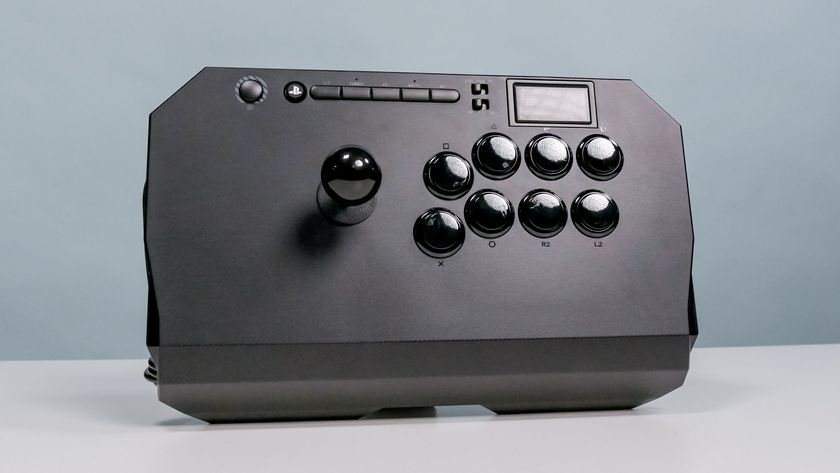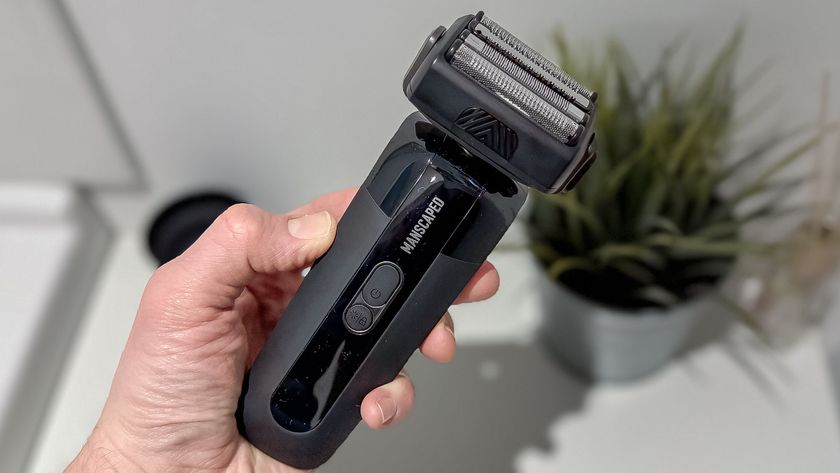Tom's Guide Verdict
The Lenovo Legion Y520 is a pre-built midlevel gaming PC with plenty of room for upgrading.
Pros
- +
Lots of room to upgrade
- +
Light on bloatware
Cons
- -
Slow transfer speeds
Why you can trust Tom's Guide
Lenovo's newest desktop is a budget rig that gives you midrange gaming (and for some configurations, easy VR) for less than a grand. The Legion Y520 ($809.99 to start, $899 as tested) is a no-frills system with everything you need to get started, minus the bloatware that some companies stuff into their desktops. While its hard drive isn't the fastest, the Legion leaves plenty of room for upgrading down the line.
Design
The Legion looks like it will transform and roll out any minute. Viewing at it from the front, I felt like I could plop it on a Transformer's body and the tower would look right at home.
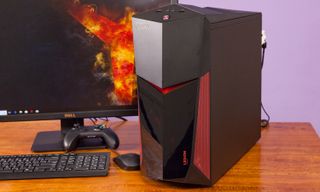
Lenovo is moving away from the IdeaCentre motif slowly, replacing its Y logo with a glowing, red "v"shaped accent between matte-black plastic and a red-tinted clear panel where you can see the fans. That window is flanked by two red grates for improved airflow. Otherwise, the design is pretty simple.
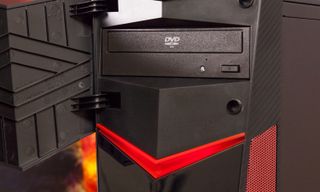
There are some ridges on top, which make it appear more aggressive, but otherwise it just has plain black sides. None of this is terribly original, and it looks a lot like Acer's Aspire GX series of desktops. The LED is only customizable in that you can turn it on and off or make it blink using Lenovo Nerve Center, but you can't change colors.
The Legion Y520 would look right at home on the body of a Transformer.
At 7.2 x 18.4 x 15.8 inches, it's a reasonably sized desktop that you'll likely store under your desk. (Though you could fit it on top if you really wanted to.) Its 33.7-pound chassis will likely keep you from schlepping it around the house all the time. The CyberPowerPC Gamer Xtreme VR is a little bigger (19.8 x 17 x 7.6 inches) and weighs almost as much (32 pounds).
Key Specs
| Row 0 - Cell 0 | Starting Configuration | Review Configuration |
| Price | $809.99 | $899.99 |
| CPU | Intel Core i5-7400 or Intel Core i5-8400 | Intel Core i5-7400 |
| GPU | Nvidia GeForce GTX 1050 Ti / 4GB | Nvidia GeForce GTX 1060 GPU / 3GB |
| RAM | 8GB | 8GB |
| Storage | 1TB 7,200-RPM HDD, 16GB Optane | 1TB 7,200-RPM HDD, 128GB PCIe SSD |
| Size | 18.4 x 15.8 x 7.2 inches. 33.7 pounds | 18.4 x 15.8 x 7.2 inches. 33.7 pounds |
Ports and Upgradability
The ports on the Legion Y520 are pretty standard for a midrange laptop. On the front, it's got two USB 3.0 ports, a headphone jack and a microphone jack. That's enough for peripherals like controllers or a VR headset, as well as a gaming headset.
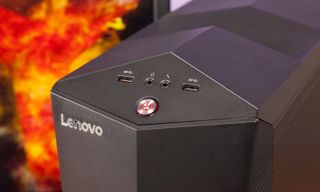
On the back are two USB 2.0 ports and two USB 3.0 ports, an Ethernet jack, a DisplayPort, HDMI, and PS/2 ports for legacy peripherals.
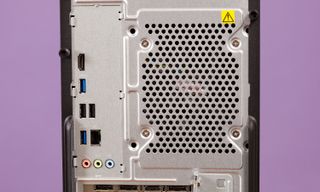
You can upgrade the Legion easily. There are four hand screws on the back of the machines. (They're screwed on tight, though. I broke out tools to open it the first time.) Once they're loosened, the side panels slide off. Inside, there's a ton of room to access the motherboard, RAM, GPU and storage. You'll need some tools, though, because the GPU is held in with a bracket that uses screws.
Gaming and VR Performance
With its Nvidia GeForce GTX 1060 GPU with 3GB of VRAM, the Legion is ready for low-level VR and can play most games at 1080p on high settings. When I played Middle-earth: Shadow of War on high settings at 1080p, the Legion rendered the game between 42 and 51 frames per second as I fought orcs after being caught in their fort. When I bumped that up to Very High settings, the game fell between 31 and 40 fps, but it stuttered at 22 fps when a large number of the monsters were on the screen.
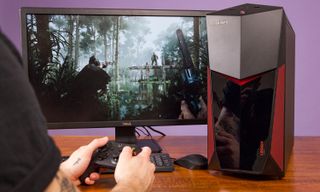
On the Hitman benchmark on Ultra at 1080p, the Legion ran the game at 58 fps, falling below the CyberPower (74.6 fps, Radeon RX 580) and our gaming-desktop average (88 fps).
The Legion is ready for low-level VR and can play most games at 1080p on high settings.
On our Rise of the Tomb Raider benchmark (1080p, very high), the game rendered at 34 fps. That's only a little slower than the CyberPower (35 fps) but below the average (70 fps).
MORE: The Best PC Games to Play Right Now
When it came to Grand Theft Auto V (1080p, very high), the Legion played at 34 fps, beating the CyberPower (35 fps) but again falling below the average (86 fps).
The Legion earned a score of 6.1 (out of 11) on the SteamVR Performance test, which will allow for play on lower settings using headsets like an HTC Vive or Oculus Rift. The CyberPowerPC reached 6.4.
Overall Performance
On the Geekbench 4 overall performance test, the Legion earned a score of 11,131, falling just below the Gamer Xtreme's 11,791 and the gaming desktop average of 18,149. I had more than 20 tabs open in Google Chrome and experienced no slowdown whatsoever.
It took the Legion 31 seconds to transfer 4.97GB of files, or 164.2MBps, which is slower than the 382.33-MBps average. On our Excel macro test, it took 1 minute and 16 seconds for the machine to pair 65,000 names and addresses, just behind the average of 1:03.
Keyboard and Mouse
You'll want to change these generic peripherals out as soon as possible. The Legion comes with a simple mouse, with just two click buttons and a scroll wheel. Out of the box, I found it to be a bit over-sensitive, though you can change that within Windows.
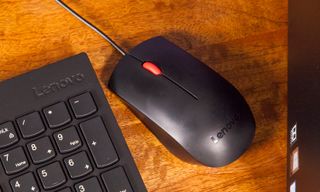
The keyboard feels like cheap plastic and has mushy keys. On the 10fastfingers.com typing test, I hit 102 words per minute, which is slightly slower than normal for me, and I got a very high error rate of 8 percent.
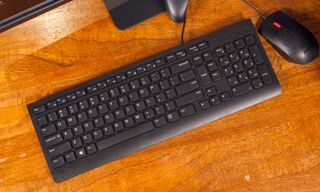
Software and Warranty
The Legion Y520 continues Lenovo's tradition of staying light on software. The tower features only Lenovo Vantage, for hardware settings, system updates and tech support, as well as Nerve Center, a gaming app that lets you control the PC's one LED, see specs at a glance and control which apps get network priority. The only big piece of junk you'll want to uninstall is a trial of McAfee antivirus.
The Legion Y520 continues Lenovo's tradition of staying light on software.
You'll still get a bunch of bloat built into Windows 10, including AutoDesk SketchBook, Disney Magic Kingdoms, Candy Crush Soda Saga, Bubble Witch 3 Saga, March of Empires: War of Lords and Drawboard PDF. Lenovo sells the Legion Y520 with a one-year warranty.
Configurations
Our Y520 review unit cost $899.99 and came with an Intel Core i5-7400 CPU, 8GB of RAM, an Nvidia GeForce GTX 1060 GPU with 3GB of VRAM, a 1TB 7,200-rpm HDD and 128GB PCIe SSD.
There are two versions of the base model, which costs $809.99. You can get it with either an Intel 7th or 8th Gen Core i5 CPU. Obviously, go for the more recent processor, as it's more powerful (the 7th Gen system will likely be out of stock sooner rather than later). Either way, you get 8GB of RAM, a 1TB and 7,200-rpm HDD, a16GB Optane cache, and an Nvidia GeForce GTX 1050 Ti with 4GB of VRAM.
MORE: The Best Gaming Desktops Available Now
The most expensive version costs $1,259.99 and comes with an Intel Core i7-8700 CPU, 16GB of RAM, a 2TB and 7,200-RPM HDD, a 256GB PCIe SSD, and an Nvidia GeForce GTX 1060 with 3GB of VRAM. In between are models with Core i5 or Core i7 CPUs and varying memory and storage options.
Bottom Line
The Lenovo Legion Y520 is a simple pre-built machine for midlevel gaming, and when configured correctly, it can handle VR. It has plenty of room for upgrading, and, thankfully, Lenovo didn't weight this machine down with bloatware.
You can, however, get a similarly specced PC in the CyberPowerPC Gamer Xtreme VR for just $779.99 with an AMD Radeon RX 580 and the same Intel Core i5-7400. That PC has more-daring looks and better peripherals than the ones Lenovo includes.
But the Legion is a good choice for those who like things simple and want the comfort of a well-known brand, and this tower also offers 8th-Gen Core configurations.
Credit: Shaun Lucas/Tom's Guide
Andrew E. Freedman is an editor at Tom's Hardware focusing on laptops, desktops and gaming as well as keeping up with the latest news. He holds a M.S. in Journalism (Digital Media) from Columbia University. A lover of all things gaming and tech, his previous work has shown up in Kotaku, PCMag, Complex, Tom's Guide and Laptop Mag among others.
